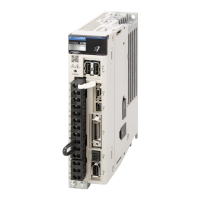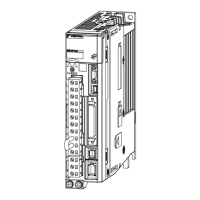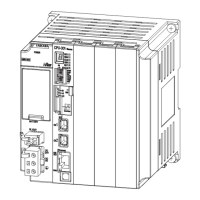12.4 Troubleshooting Based on the Operation and Conditions of the Servomotor
12-64
Position
Deviation
(without
Alarm)
If reference pulse input multi-
plication switching is being
used, noise may be causing
the I/O signals used for this
function (/PSEL and /PSELA)
to be falsely detected.
Check the I/O signal
cables to see if they sat-
isfy specifications. Use
shielded twisted-pair
cables or screened
twisted-pair cables with
conductors of at least
0.12 mm
2
(stranded wire).
Use cables that satisfy
the specifications.
–
Noise interference occurred
because an I/O signal cable
is too long.
Check the lengths of the
I/O signal cables.
The I/O signal cables
must be no longer than
3 m.
–
An encoder fault occurred.
(The pulse count does not
change.)
–
Replace the Servomo-
tor or linear encoder.
–
A failure occurred in the
SERVOPACK.
–
Replace the SERVO-
PACK.
–
Servomotor
Overheated
The surrounding air tempera-
ture is too high.
Measure the surrounding
air temperature around
the Servomotor.
Reduce the surround-
ing air temperature to
40°C or less.
–
The surface of the Servomo-
tor is dirty.
Visually check the surface
for dirt.
Clean dirt, dust, and oil
from the surface.
–
There is an overload on the
Servomotor.
Check the load status
with a monitor.
If the Servomotor is
overloaded, reduce the
load or replace the
Servo Drive with a
SERVOPACK and Ser-
vomotor with larger
capacities.
–
Polarity detection was not
performed correctly.
Check to see if electrical
angle 2 (electrical angle
from polarity origin) at any
position is between ±10°.
Correct the settings for
the polarity detection-
related parameters.
–
Continued from previous page.
Problem Possible Cause Confirmation Correction Reference

